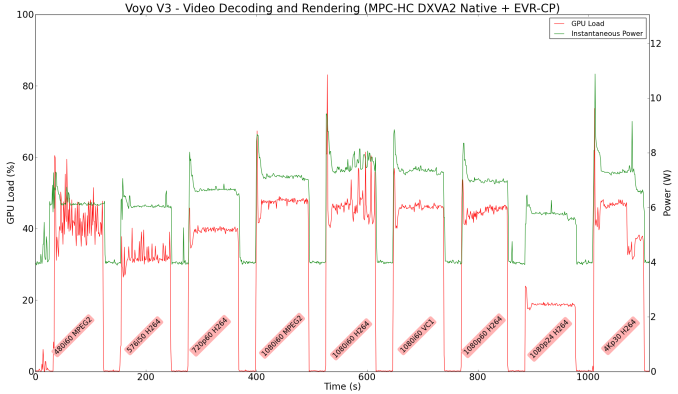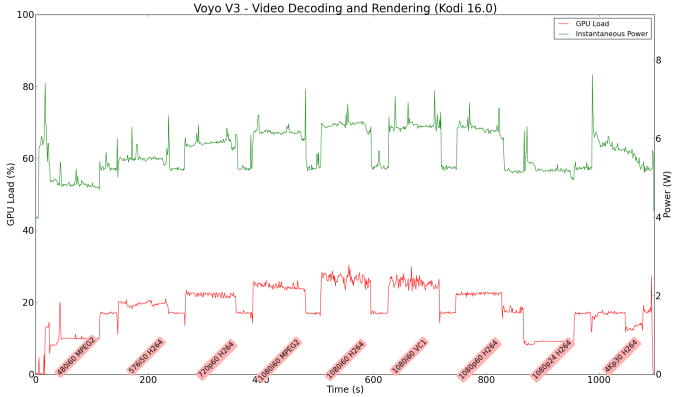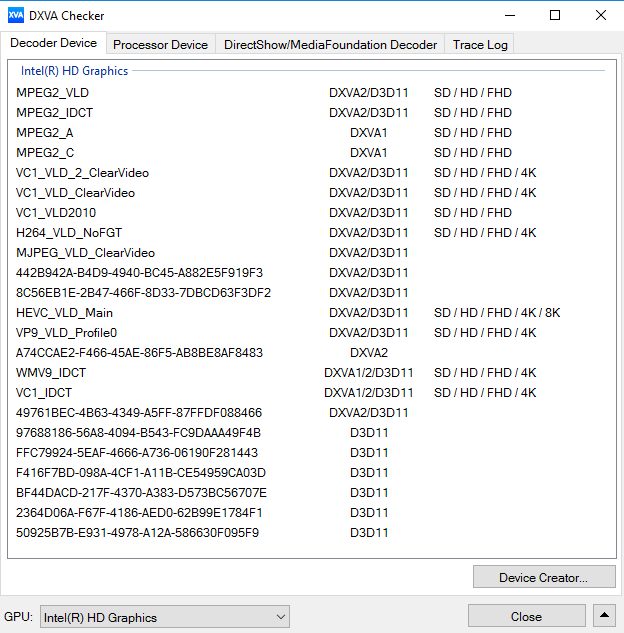Voyo V3 Review - A Fanless Intel Atom x7-Z8700 (Cherry Trail) mini-PC
by Ganesh T S on March 1, 2016 8:00 AM EST- Posted in
- Systems
- Intel
- Atom
- Passive Cooling
- Mini-PC
- Cherry Trail
HTPC Credentials
Given the Voyo V3's fanless nature and the presence of Intel HD Graphics, we expect many purchasers to use it as a media playback machine / HTPC. In fact, GearBest markets the Voyo V3 as a media player / mini-PC. It is obvious that we are not looking at a madVR capable machine, but one targeted at the entry-level / average HTPC user or someone looking for a HTPC to put in a second or third room (non-primary HTPC). There are two HTPC aspects that we will explore in this section, one related to network streaming (OTT services), and the other related to local file playback. Prior to that, we have a small sub-section dealing with refresh rate accuracy.
Refresh Rate Accurancy
Starting with Haswell, Intel, AMD and NVIDIA have been on par with respect to display refresh rate accuracy. The most important refresh rate for videophiles is obviously 23.976 Hz (the 23 Hz setting). Bay Trail didn't have problems with this refresh rate, and, as expected, the Cherry Trail-based Voyo V3 has no trouble with refreshing the display appropriately in this setting.
The gallery below presents some of the other refresh rates that we tested out. The first statistic in madVR's OSD indicates the display refresh rate.
Network Streaming Efficiency
Evaluation of OTT playback efficiency was done by playing back our standard YouTube test stream and five minutes from our standard Netflix test title. Using HTML5, the YouTube stream plays back a 1080p H.264 encoding. Since YouTube now defaults to HTML5 for video playback, we have stopped evaluating Adobe Flash acceleration. Note that only NVIDIA exposes GPU and VPU loads separately. Both Intel and AMD bundle the decoder load along with the GPU load. The following two graphs show the power consumption at the wall for playback of the HTML5 stream in Mozilla Firefox (v 44.0.1).

GPU load was around 45.32% for the YouTube HTML5 stream and 5.87% for the steady state 6 Mbps Netflix streaming case.
Netflix streaming evaluation was done using the Windows 10 Netflix app. Manual stream selection is available (Ctrl-Alt-Shift-S) and debug information / statistics can also be viewed (Ctrl-Alt-Shift-D). Statistics collected for the YouTube streaming experiment were also collected here.

Decoding and Rendering Benchmarks
In order to evaluate local file playback, we concentrate on EVR-CP with MPC-HC and Kodi 16.0. We already know that EVR works quite well even with the Intel IGP for our test streams. In our earlier reviews, we focused on presenting the GPU loading and power consumption at the wall in a table (with problematic streams in bold). Starting with the Broadwell NUC review, we decided to represent the GPU load and power consumption in a graph with dual Y-axes. Nine different test streams of 90 seconds each were played back with a gap of 30 seconds between each of them. The characteristics of each stream are annotated at the bottom of the graph. Note that the GPU usage is graphed in red and needs to be considered against the left axis, while the at-wall power consumption is graphed in green and needs to be considered against the right axis.
Frame drops are evident whenever the GPU load consistently stays above the 85 - 90% mark. The Broadwell-class GPU has no problems at all with any of our test streams (up to 4Kp30 H.264)
Power consumption at the wall was less than 8W even for the most stressful high frame-rate streams. GPU loading was also reasonable (as measured using GPU-Z)
Moving on to the codec support, the Gen8 LP 16 EU-version in the Atom x7-Z8700 is quite similar to that of the Atom x5-Z8300 in the Intel Compute Stick, DXVA Checker serves as a confirmation. The GPU includes decode support for HEVC Main Profile (8b) up to 8K resolution. Unfortunately, without the capability to drive a 4Kp60 display over HDMI, this is not suitable as a 4K HTPC (even though it can drive up to 4Kp30, thanks to the HDMI 1.4b port)




















69 Comments
View All Comments
ragenalien - Tuesday, March 1, 2016 - link
Is the wireless card replaceable.ganeshts - Tuesday, March 1, 2016 - link
The wireless card communicates via SDIO and is soldered to the board.ganeshts - Tuesday, March 1, 2016 - link
You can actually check out the board layout here: http://www.cnx-software.com/wp-content/uploads/201...The WLAN card is on the top right (where the black antenna pigtail comes out from), and you can see that it is indeed not replaceable.
Coelispex - Sunday, April 3, 2016 - link
Hi Ganeshts,If we use a 802.11ac USB adapter, would it work for the Voyo V3?
Ratman6161 - Tuesday, March 1, 2016 - link
I can't get past the Warez OS issue. If I wanted such a device with Windows on it, it better be a legally installed copy. The idea that I would need to go out and get my own copy means you have to add $100 to the price in order to get it leagal for what it was supposed to come with out of the box.ganeshts - Tuesday, March 1, 2016 - link
I don't think Microsoft allows for 'cheap' licenses if the hardware specs are as good as the Voyo V3.. particularly, I believe the cheap license is available only for the x86 version, not x64. Also, the RAM has to be 2GB or lesser (IIRC).Anyways, the cost for the Windows license is an issue with any PC that doesn't have neutered hardware specifications.
Slawek - Tuesday, March 1, 2016 - link
What are results of Google Octane and Mozilla Kraken? If am going to use it for web browsing these are the most important benchmarks to know.ganeshts - Tuesday, March 1, 2016 - link
Web browsing is a major part of the PCMark 8 benchmarks - and those scores make it clear that this unit is better than other passively cooled Braswell PCs.Usually, we don't present web browser benchmarks for mini-PCs because they vary widely with the browser used and also updates to the browsers themselves - making it difficult to go back and compare against older units. It is a different case for more 'closed' systems such as tablets and smartphones. Because of this, we believe that the PCMark 8 browser tests (with their standardized browser engine) are more indicative of performance that users can get at any given point of time.
Slawek - Tuesday, March 1, 2016 - link
On my laptop difference between the latest Firefox, Chrome and Safari is within 5%, this is precise enough tool that tells me about system performance. Both Octane and Kraken are easy to execute. I can walk up to Microsoft or Apple store and in less than a minute I can compare which computer is faster.ganeshts - Tuesday, March 1, 2016 - link
Can you tell me what is the difference between Firefox 30 and Firefox 44 ? I can't go back and power up every single PC reviewed before to rerun those benchmarks every time the browser version changes.I prefer a standardized browsing engine, and that is what PCMark 8 provides.
It is nice to have quick scores to compare against what you already have, but it doesn't hold up under detailed scrutiny - we need repeatable and reproducible benchmarks for different use-cases.